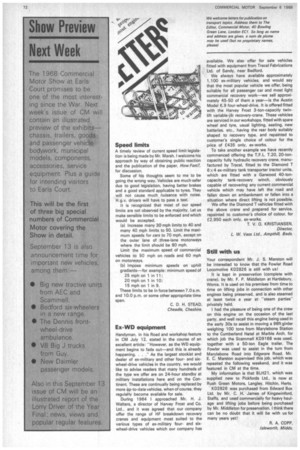Speed limits
Page 78

If you've noticed an error in this article please click here to report it so we can fix it.
A timely review of current speed limit legislation is being made by Mr. Marsh. I welcome his approach by way of obtaining public reaction and the publication of the paper. How Fast?, for discussion.
Some of his thoughts seem to me to be going the wrong way. Vehicles are much safer due to good legislation, having better brakes and a good standard applicable to tyres. They will not cause much nuisance with noise. H.g.v. drivers will have to pass a test.
It is recognized that most of our speed limits are not observed by the majority. Let us make sensible limits to be enforced and which would be accepted.
(a) Increase many 30 mph limits to 40 and many 40 mph limits to 50. Limit the maximum speeds for cars to 70 mph, except on the outer lane of three-lane motorways where the limit should be 80 mph.
Limit the maximum speed of commercial vehicles to 50 mph on roads and 60 mph on motorways.
lb) Impose minimum speeds on uphill gradients—for example: minimum speed of 25 mph on 1 in 11: 20 mph on 1 in 10; 15 mph on 1 in 9.
These limits to be in force between 7,0 a.m. and 10.0 p.m. or some other appropriate time span.
C. D. H. STEAD. Cheadle, Cheshire.










































































































































